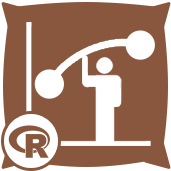 Lift Chart Tool
Lift Chart Tool Lift Chart Tool
Lift Chart ToolThe Lift Chart tool produces a cumulative captured response chart (also called a gains chart) and an incremental response rate chart that are used to visually assess the comparative accuracy of different binary (yes/no) classification models to predict new data and to make an assessment of the expected economic implications of the use of a predictive model in a business process.
Both of these charts are based on aggregating data into 10 groups (deciles) that are ordered based on the predicted probability of a favorable response for each model, and then comparing this response to what would be expected if the selection of prospects was done randomly. In the case of the cumulative response chart, the chart examines what percentage of the total response that would be obtained if all customers in an organization's database were contacted is obtained by contacting the best 10 percent, 20 percent, and so on based on model predictions. The x (horizontal) axis of the chart is percentage of the database contacted, while the y (vertical) axis is the percentage of the total response captured by going up to that "best" decile of the database based on the model.
For example, the best 20 percent of prospects based on the model may represent 50 percent of the favorable response that would be obtained if all prospects were contacted. The incremental response rate chart gives the favorable response rate for each of the model-based ordered decile groups in the database. In addition, the tool produces a gains table and measures of the area under the curve and the Gini coefficient to provide overall comparative metrics of the performance of different models when the cummulative captured respone chart option is selected, and a table of response rates at different deciles for each model when the incremental reponse rate option is selected.
The tool only works with binary classification models from the Neural Network, Logistic Regression, Decision Tree, Forest Model, Boosted Model, Spline Model, or Stepwise tools that have been unioned together into a single Alteryx data stream, and either an Alteryx data stream or XDF metadata stream that is consistent with the model object (in terms of field names and the field types), and all have the same binary target variable. The output for the tool is a plot of the type of lift chart specified by the user and the tabular output described above.
This tool uses the R programming language. Go to Options > Download Predictive Tools to install R and the packages used by the R Tool.
Graph resolution: Select the resolution of the graph in dots per inch: 1x (96 dpi); 2x (192 dpi); or 3x (288 dpi). Lower resolution creates a smaller file and is best for viewing on a monitor. Higher resolution creates a larger file with better print quality.
An Alteryx Report field that consists of an R-Graph and a Lift/Gains table. These elements can be used to assist in the creation of custom reports.
©2018 Alteryx, Inc., all rights reserved. Allocate®, Alteryx®, Guzzler®, and Solocast® are registered trademarks of Alteryx, Inc.